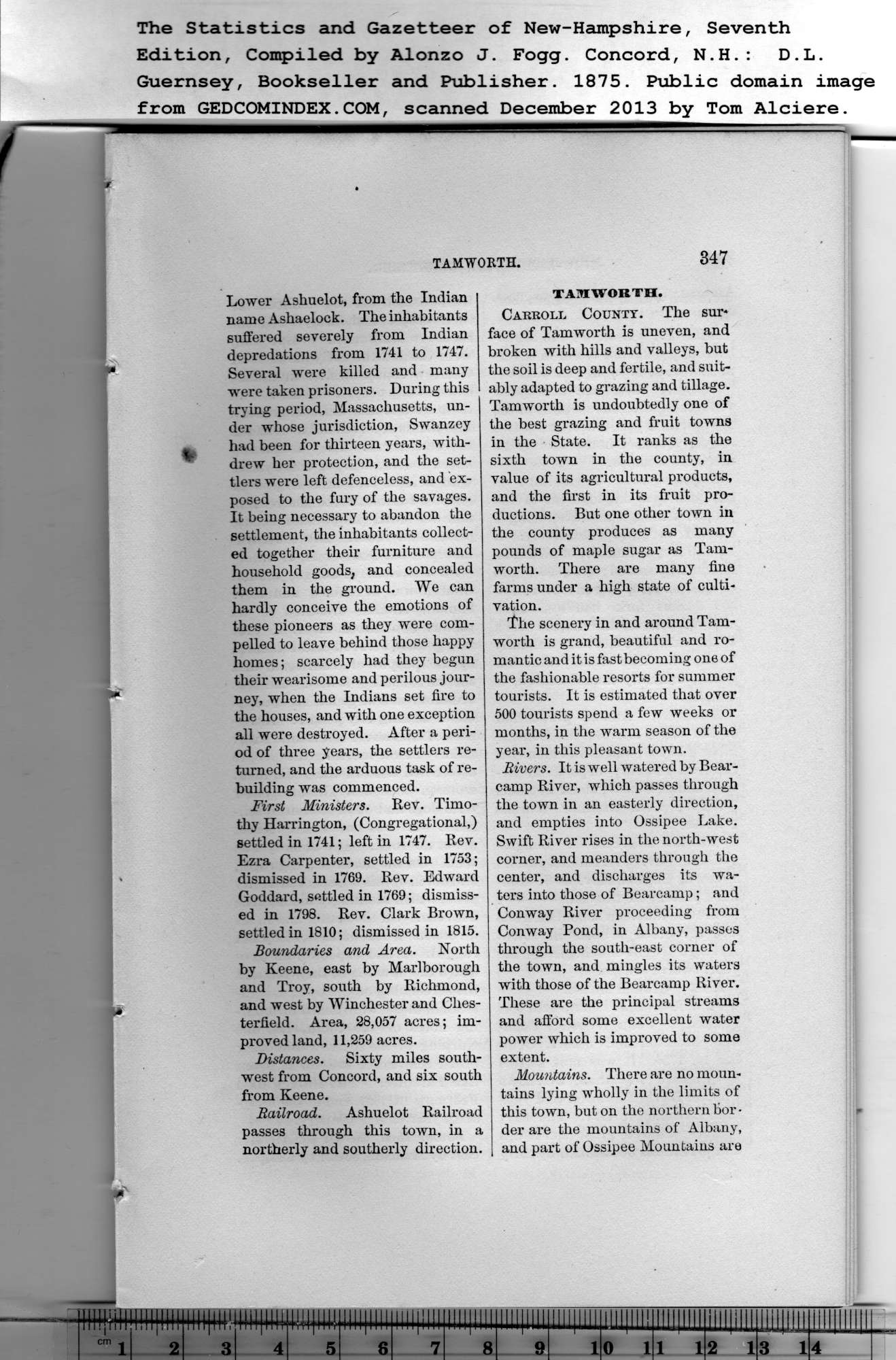|
Lower Ashuelot, from the Indian
nam e Ashaelock. The inhabitants
suffered severely from Indian
depredations from 1741 to 1747.
Several were killed and many
were taken prisoners. During this
trying period, Massachusetts, un-
der whose jurisdiction, Swanzey
had been for thirteen years, with-
drew her protection, and the set-
tlers were left defenceless, and ex-
posed to the fury of the savages.
It being necessary to abandon the
settlement, the inhabitants collect-
ed together their furniture and
household goods, and concealed
them in the ground. We can
hardly conceive the emotions of
these pioneers as they were com-
pelled to leave behind those happy
homes; scarcely had they begun
their wearisome and perilous jour-
ney, when the Indians set fire to
the houses, and with one exception
all were destroyed. After a peri-
od of three years, the settlers re-
turned, and the arduous task of re-
building was commenced.
The Statistics and Gazetteer of New-Hampshire, Seventh
Edition, Compiled by Alonzo J. Fogg. Concord, N.H.: D.L.
First Ministers. Rev. Timo-
thy Harrington, (Congregational,)
settled in 1741; left in 1747. Rev.
Ezra Carpenter, settled in 1753;
dismissed in 1769. Rev. Edward
Goddard, settled in 1769; dismiss-
ed in 1798. Rev. Clark Brown,
settled in 1810; dismissed in 1815.
Boundaries and Area. North
by Keene, east by Marlborough
and Troy, south by Richmond,
and west by Winchester and Ches-
terfield. Area, 28,057 acres; im-
proved land, 11,259 acres.
Distances. Sixty miles south-
west from Concord, and six south
from Keene.
Railroad. Ashuelot Railroad
passes through this town, in a
northerly and southerly direction. |
RTH. 347
TAMWOBTH.
Cakkoll County. The sur-
face of Tamworth is uneven, and
broken with hills and valleys, but
the soil is deep and fertile, and suit-
ably adapted to grazing and tillage.
Tamworth is undoubtedly one of
the best grazing and fruit towns
in the State. It ranks as the
sixth town in the county, in
value of its agricultural products,
and the first in its fruit pro-
ductions. But one other town in
the county produces as many
pounds of maple sugar as Tam-
worth. There are many fine
farms under a high state of culti-
vation.
The scenery in and around Tam-
worth is grand, beautiful and ro-
mantic and it is fast becoming one of
the fashionable resorts for summer
tourists. It is estimated that over
500 tourists spend a few weeks or
months, in the warm season of the
year, in this pleasant town.
Rivers. It is well watered by Bear-
camp River, which passes through
the town in an easterly direction,
and empties into Ossipee Lake.
Swift River rises in the north-west
corner, and meanders through the
center, and discharges its wa-
ters into those of Bearcamp; and
Conway River proceeding from
Conway Pond, in Albany, passes
through the south-east corner of
the town, and mingles its waters
with those of the Bearcamp River.
These are the principal streams
and afford some excellent water
power which is improved to some
extent.
Mountains. There are no moun-
tains lying wholly in the limits of
this town, but on the northern bor-
der are the mountains of Albany,
and part of Ossipee Mountains are |
